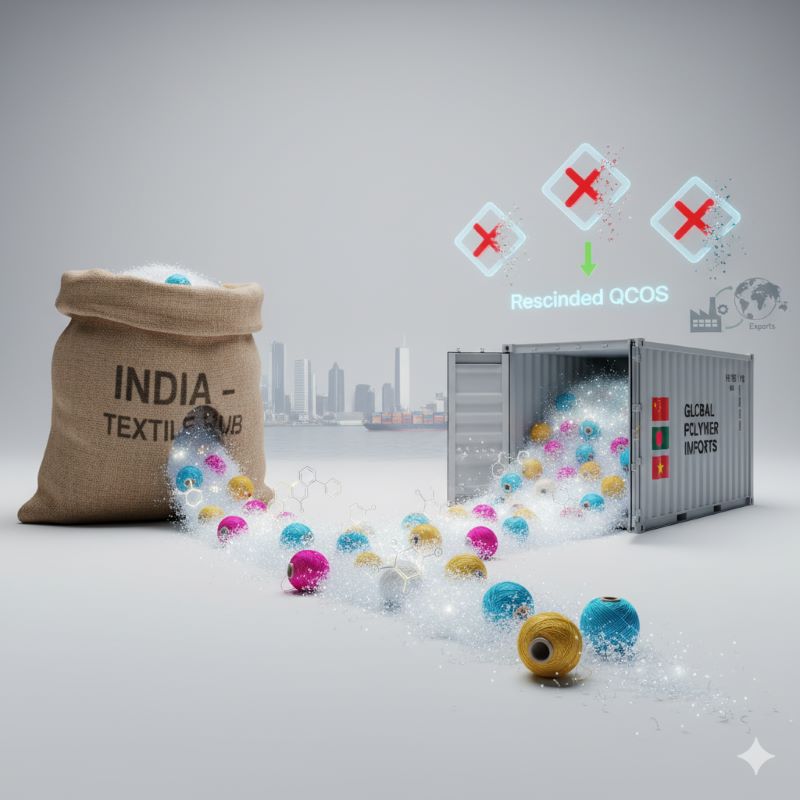FW
For the fourth quarter American brand Skechers posted a revenue of $970.6 million. Store base grew to 2,570 locations at year-end and saw impressive growth across the globe. Company-owned global retail sales in Q4 increased 25.8 per cent, with a comparable same store sale increase of 12 per cent globally. International wholesale sales increased 40.2 per cent.
The company reported profits of $179.2 million for the full year 2017. Record revenue was reported at $4.16 billion, an increase of over $600 million from the previous year’s sales. This was led primarily by a 23 per cent increase in the company’s international wholesale business and a 21.9 per cent increase in global retail business. Domestic wholesale grew 4.1 per cent. Gross margins for the year were up from 45.9 per cent to 46.6 per cent, although operating margins dropped a percentage point because of increased selling expenses primarily to support growth in Skecher’s international markets.
In the United States, Skechers is the number one casual lifestyle and casual dress footwear brand and the number second casual athletic footwear brand. The company’s outlook for the first quarter of 2018 is enthusiastic.
A Sakthivel has been elected vice chairman of the Apparel Export Promotion Council (AEPC) for 2018-19. Earlier, he was chairman in 1998, 2004 and 2012. He has steered projects like the Knitwear Technology Mission, the Sector Skill Council for Apparel, a national social compliance project for the apparel sector and several other initiatives for holistic development of the sector.
He is the founder president of the Tirupur Exporters’ Association (TEA). For his role in placing Tirupur on the world map as the main cluster for sourcing knitwear supplies from India, and his contribution to the apparel industry, he was awarded the Padma Shri in 2009. A guide and mentor to the Tirupur knitwear Industry, Sakthivel steered growth of exports from Tirupur from a mere Rs 15 crores in 1984-85 to more than Rs 27,000 crores in 2016-17.
He has also served as president of the Federation of Indian Exports Organisations (FIEO) and currently holds the position of FIEO chairman for the southern region. He is the first chairman of the Sector Skill Council for Apparel, Made-ups and Handlooms, which has the mandate to develop skills repository standards, evaluation criteria, and an accreditation system for creating employability in the apparel sector.
Directa Plus, Italy-based producer and supplier of graphene-based products for use in consumer and industrial markets, has announced the launch of two new textile collections containing its Graphene Plus (G+) by Colmar, a high-end sports and activewear company, and Eurojersey, a producer of high quality warp-knit technical fabrics under its Sensitive Fabrics brand.
Both collections were unveiled at ISPO 2018, the sport and sportswear international trade fair held in Munich. The launch of the Ski Winter 2018/19 collection marks Colmar’s third winter range with Directa Plus. The new collection has been expanded to consist of 31 garments incorporating G+, including male and female ski jackets and newly-released graphene-enhanced ski trousers. It reportedly follows the commercial success of two previous ski collections.
The inclusion of G+ in textiles provides a technologically-advanced fabric with unique thermal features: allowing a homogeneous distribution of the heat produced by the human body in cold weather and a heat dispersion effect in hot weather. G+ also provides the fabric with a bacteriostatic effect that enhances hygiene and anti-odor features, which is particularly relevant for sportswear and garments that are in contact with the body. The result is enhanced comfort for the wearer.
Aditya Birla’s fabric brand Liva has come up with a chatbot. The chatbot will function as a fashion portal that will feature the up-to-date information on fashion and celebrity style trends. It is meant to facilitate visitors to traverse through the Liva product assortment but handle enquiries from prospective buyers. It also provides them with a gateway to connect with the brand’s sales team.
The company feels the innovation will keep it connected to customers and help understand their preferences better. The 24×7 tech service will also aid the brand’s team to apprehend buyer’s inclinations and selections and then optimise the offerings. The chatbot dubbed as the Liva Fluid Fashion Assistant has been developed in tech collaboration with Gupshup, a Silicon Valley-based bot and messaging platform.
Fashion purchases are usually a consultative experience. Customers want to browse through multiple options, learn more about some of the items and then maybe purchase one. Chatbots such as Liva’s are ideal for enabling this. Bots are gradually becoming part of the fashion industry. Global fashion brands such as Louis Vuitton and Levi’s have initiated chatbot services to attract tech-savvy consumers and thereby increase sales of their products.
Intertextile Shanghai Apparel Fabrics, to be held from March 14 to 16, 2018, will showcase premium wool fabrics. The Premium Wool Zone will house mills from the UK, Italy, France, Peru and elsewhere. The Italy Pavilion will include a number of quality wool suppliers. Rounding out the sourcing options, and adding further quality and price variety, are the 180-plus domestic wool suppliers.
Intertextile Shanghai Apparel Fabrics will feature some 3,300 exhibitors from around 20 countries covering all apparel fabrics and accessories product groups. Much of the demand for high-end wool at the fair comes from Chinese buyers thanks to growing affluence in the country. China accounts for over 70 per cent of Australian wool exports. While 15 to 20 years ago most wool imported by China was re-exported, nowadays around 60 per cent is used to produce garments for the domestic market.
While most collections in the Premium Wool Zone will emphasise on the brands’ heritage and tradition, like Holland & Sherry, some will be introducing new or updated collections. Dugdale Bros & Co refreshed its Royal Classic superfine Australian merino wool collection last year for the first time since 1987, adding around 30 patterns drawn directly from its original archive. Abraham Moon & Sons will showcase new fabrics at the fair, which take in categories of classic, casual and contemporary, with a unique use of worsted, linen and cashmere combinations.
India is ranked 44 among 50 nations in the Intellectual Property (IP) index. India’s overall score has increased substantially from 25 per cent in the fifth edition of the index to 30 per cent in the sixth edition. India’s ranking reflects a relatively strong performance in the new indicators as well as positive reform efforts on patentability of computer-implemented inventions and registration procedures for well-known marks.
For the first time India has broken free of the bottom 10 per cent of economies measured and its score represents the largest percentage improvement of any country measured. Additional meaningful reforms are needed to complement the policy. In what is otherwise a very challenging environment for IP rights holders, India has demonstrated a long-standing and clear commitment to increasing awareness of the importance of IP rights and respect for creators and innovators.
The US tops the list with 37.98 points followed by the United Kingdom (37.97) and Sweden (37.03). But despite an improvement India continues to remain at the bottom of the ladder. Among key weaknesses are: limited framework for protection of life sciences patentability requirements outside international standards, lengthy pre-grant opposition proceedings, previously used compulsory licensing for commercial and nonemergency situations, limited participation in international IP treaties and no participation in international PPH (Patent Prosecution Highway) tracks.
The annual trade show Make it British will now be known as Make it British Live! The show is a leading British sourcing event attracting designers, manufacturers, retailers and academics each year. Since its launch five years ago, the event has grown from 56 to over 200 exhibitors and is becoming increasingly more popular among British manufacturers and businesses, who want to source products that are made in the UK.
The new name, Make it British Live!, reflects the essence of the Make it British campaign and encourages more people to buy British and manufacture in the UK. The rebrand is expected to attract even more progressive businesses, looking to source locally and re-shore their production back to the UK.
From garment manufacturing and textile mills to pattern cutters and trimming suppliers, Make it British Live! aims to bring together all manufacturers under one roof, if they want to make in the UK. More and more businesses in the UK are looking to manufacture locally. More companies from overseas are seeking out brands with a Made in Britain label. For many years, the fashion and textiles supply chain in the UK was fragmented but Make it British Live! is all about bringing that supply chain back together.
Bombay Dyeing has reported a net profit of Rs 3.38 crore for the third quarter ended December 31, 2017. The company had posted a net loss of Rs 5.57 crore in the same period last fiscal. Total sales during the period under review stood at Rs 635.08 crore, up 28.07 per cent, as against Rs 495.88 crore in the year-ago quarter, up 14.38 per cent.
Bombay Dyeing's total expenses were at Rs 626.92 crore in Q3/FY 2017-18 as against Rs 501.45 crore, up 25.02 per cent. The stock hit an intraday high of Rs 248 and intraday low of 236.4.
Dhaka will host the first Bangladesh Fashionology Summit on February 12, 2018. The aim of the show is to inform key stakeholders, entrepreneurs and authorities how new technologies, automation and digitalisation will transform the future of industry. Mostafiz Uddin, Founder and CEO of Bangladesh Denim Expo, initiated and organised the summit where its main theme is ‘Step into the Future Today’. Industry 4.0 would be among the key discussions points at the Summit and the topics include artificial intelligence, industrial Internet, big data, robotics, 3-D printing and knowledge work automation.
Experts from 11 countries including the US, the Netherlands, France, the UK, Japan, Canada, Sweden, Thailand and India will participate in discussions and panels in four separate sessions: Factory of the Future; Eco and Sustainable Innovation; On Demand Manufacturing and Mass Customization; and Smart Wearables (Fusion of Fashion and Tech).
Mostafiz says they are bringing together under one roof the most inspiring and innovative thinkers and companies from across the globe to initiate the much-needed conversations around technology, digitalisation and innovation in the apparel and fashion industry to shape the future of Bangladesh apparel industry. The first ever ‘Fashion Tech Runway Show’ hosting the latest digital tech collections by designers from The Netherlands, Spain, Paris, the UK and India will also be held during the summit.
Futuristic fashion tech creations such as smart wearables, 3-D printed items and LED embedded glow pieces will be displayed on the runway. Mostafiz points out smart and tech embedded wearables are the future of fashion. As seeing is believing, we are going to organise the Fashion Tech Runway Show to inspire the industry to step into the future. The aim of this initiative is to build a bridge between the present and future of the apparel industry of Bangladesh, the world’s second largest readymade garment exporting country.
US retailer, Macy's plans to launch a women's clothing targeted at Muslim shoppers. The line will feature hand-dyed hijabs, cardigans, dresses and tops. The company has teamed up with Muslim designer, Lisa Vogl, a graduate from The Workshop at Macy's minority- and women-owned business development program, to showcase her brand Verona Collection.
Shawn Outler, Macy’s executive vice president, says, "Through The Workshop at Macy’s, we want to nurture and support minority- and women-owned businesses to build their capabilities and become the next generation of retail partners. Lisa Vogl has said in a statement, “Verona Collection is more than a clothing brand. It’s a platform for a community of women to express their personal identity and embrace fashion that makes them feel confident on the inside and outside.”
Last year, Nike also launched a women's clothing line targeted at Muslim shoppers and started offering a high-performance hijab tailored for athletics after Ibtihaj Muhammad, a successful American fencer, became the first American woman to compete in the Olympics while wearing a hijab in the 2016 Summer Games in Rio de Janeiro, Brazil. Verona Collection’s clothing line ranges in price from $12.95 to $84.95 and will launch on Macy's website on Feb. 15.












